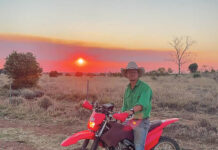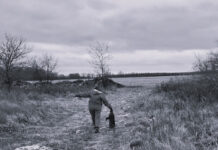
While there are a lot of people concentrating on bagging a turkey and streamside fishing during the spring, those aren’t the only wild harvest seasons going on.
One quarry is hiding in the woods, resting behind fallen logs and among popping Mayapples, Dutchman’s britches and trout lilies. There are no special permits or licenses to worry about either; all you need is permission from the landowner to go foraging on the targeted property. It will take some careful searching to locate your prey, and timing can be very important. Thankfully, it doesn’t require the hunter to be in the woods at dawn.
Camouflage clothing isn’t necessary either, except to possibly hide from those competing to find your hidden hot spots. As for specialized hunting gear, all it takes to bag your quarry is literally, a bag. As for myself, I especially favor a plastic bread sack to get the job done.
If you haven’t already guessed, it’s the time of year for morel mushrooms to pop out of the forest floor. It’s also a time when a lot of recipe boxes are dusted off to find just the perfect meals to be prepared.
If you choose to join the hunt, you’ll soon learn the many secrets of the search, which will prepare you to become a dedicated “shroomer.” You might find yourself using valuable vacation time to go shrooming, even venturing to that state up north to share in their legendary mushroom harvest. One thing is sure, once you’ve located a productive area, you’ll likely keep it as secret as your past dating life. If asked for hunting advice, you’ll even mislead your best friends, sending them on unsuccessful forays to protect your own happy hunting grounds. Some shroomers will even take kids along to assist on their searches, bordering on violating child labor laws.
The target of all the excitement are the Morchella mushrooms, the true morels — morel being the most commonly used name. They’re an edible mushroom with a distinctive honeycomb-like appearance which makes them one of the easiest wild mushrooms to identify. Their cap is composed of a network of pits and ridges which give it a natural spongy look. They’re gathered every spring for their superior taste and the joy of the hunt and are prized by discriminating gourmets.
When and where

Morels are most readily found from the first of April through the first week of May, sometimes a little longer. The best time is usually when daytime temperatures hold steadily in the 60s with nighttime lows not dipping below 40 F. I would say that we are nearing the waning peak in Ohio. Michigan’s morel season is usually a week or two behind us. Try to time your hunt to closely follow the second deep penetrating spring rain of the year.
My father, who was a shroomer extraordinaire, told me that when the redbud trees begin budding, morels pop out to applaud the show. There’s a hint of experienced wisdom to that advice and I’ve found it to be true.
These tasty little mushrooms like to grow in shaded, wooded areas and their edges. They seem especially prone to be found around dead elm trees and in areas where tulip, aspen and oaks like to grow.
As the early spring ground is warming, you’ll find them on south-facing slopes in fairly open areas. As the season deepens, your search should also deepen into the woods and onto north-facing slopes.
The Ohio Division of Forestry adds this additional advice, “In Ohio, morel mushrooms are most often found on the edge of wooded areas, and they can be found around many kinds of trees — sycamore, aspen, oak, ash and elm trees. They also grow at the base of dying trees.”
Look for plant species that share these fertile forest areas as a clue of where you might make a find. These include fiddle-head ferns, moss, Mayflowers and trillium. Morels have also been known to magically appear in yards, causing more than one mowing job to be delayed.
Morel hunting is kind of like fishing. It may take you a while to find your first one, but when you do, it’s time to slow down and start working a pattern. These fungi like the company of their own kind and are often found in groups which my father called a “mess,” the same thing he used to describe a good day’s find. Coincidentally, my mother used that same term to describe my brother, the dog and me after following dad around on a mushroom hunt.
If you’re the outdoorsy type as most shroomers tend to be, consider carrying a little extra gear; you may find it handy to have along. I like to take binoculars, a camera (many cell phones will get the picture-taking job done) and a wildflower or birding guide. A notebook is another worthwhile addition. There’s nothing like a walk in the woods to help generate new thoughts, ideas, plans and memories, and having the notebook allows you to record your favorite spots.
Preparation
Morel addicts usually have a favorite recipe that they’ll be glad to share with you, but I’ll bet most started out with simple pan frying — their other favorite concoctions growing from there. My dad’s favorite, and one that carries the essence of his family history in its drifting vapors, began that way.
First, a really thorough rinsing is in order. All those little spaces on the morel’s surface are great hiding spots for countless tiny insects. After that, dad like to use a refrigerated overnight soak in a bowl of salted water to help root out the more stubborn bugs. To help accomplish the task, a layer of paper towels is placed on top and pressed down a bit and left in place. This helps keep the mushrooms submerged. Dad began with cold tap water, but many prefer warm water (not hot) to help dissolve the salt. That seems logical to me.
Once out of the fridge, it’s back for another good rinse and you’re ready to go — to another round of soaking. Split the morels from end to end and follow the same procedure, but this time it’s only for a couple of hours.
While this was going on, he’d use a plastic bag and mix flour, salt, Hungarian paprika, garlic and onion powder, ground black pepper and his secret ingredient: a little cayenne pepper. I guess it’s not a secret anymore. If I could give you amounts, I would. I just don’t remember dad measuring anything when he was cooking, so allow your tastebuds to decide.
After that final soak and a drying pat-down, toss the mushrooms in the flour concoction and then they’re ready to go into a high-sided cast iron skillet that’s hot and ready to go, having already melted down at least a stick of good butter.
Try to work in small batches and keep on eye on their progress so they don’t burn, flipping them once during cooking. Then, it’s back to clean paper towels to drain and cool while you’re busy on the next batch.
One note of caution: If you have people helping you in the kitchen, there’s a risk of those morels disappearing while your back’s turned.
There are plenty of other morel recipes on the web and plenty more in the hands of devoted shroomers. Check these sites for more shrooming insights: www.morels.com, www.thegreatmorel.com and www.mushroomgear.com. Not surprisingly, there are also several groups available on Facebook.
“Nature alone is antique, and the oldest art a mushroom.”
— Thomas Carlyle














